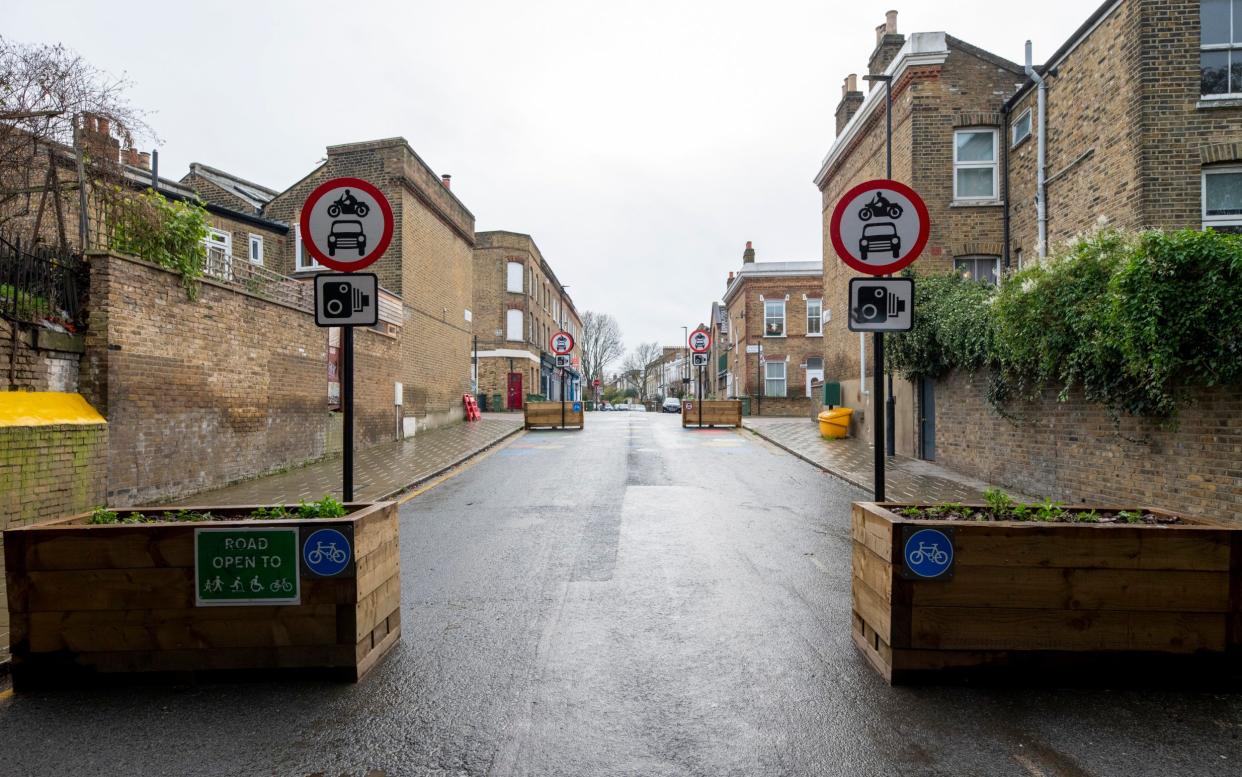Labour council’s ‘secret’ LTN fine earnings revealed

A council’s “secret” figures which show it is banking up to £1.5 million a month in fines from two low traffic neighbourhoods (LTN) also reveal five in six are overturned.
The Labour-run Hammersmith and Fulham council had to cancel 266,400 fines in 2023 despite only securing payment for 52,000 from its south Fulham LTN just east of Wandsworth Bridge Road on the River Thames.
It means around five out of six penalty charge notices (PCNs) were issued to motorists who were in fact permitted to enter a neighbourhood the council had closed to through traffic.
Last month, The Telegraph revealed how the London council had raked in £1 million a month for a single LTN to the west of south Fulham.
The latest batch of data the council eventually released this month shows the neighbouring eastern LTN made up to £500,000 a month in fines last year, banking £4 million.
It means the number of fines and income from that LTN has remained largely the same as when it was introduced in the Summer of 2020.
Campaigners say the data disproves the council’s repeated claim that motorists learn to avoid “rat runs” meaning the numbers of fines and income falls.
The council had initially refused to publish the financial data for the eastern LTN after receiving a Freedom of Information request. But, after an appeal in which campaigners accused town hall bosses of being “secretive” the council apologised and released the fines statistics.
Way above average
In total, the council banked nearly £12 million from both LTNs in 2023. However, 75,000 PCNs are classified as “open” and could still generate more than £9 million if paid at the full £130 fine rate.
The 105,000 fines for the west LTN and 52,000 for the eastern one both far exceed the average 36,450 fines that a Government study found most local authorities issued for an LTN.
Caroline Shuffrey, a Fulham resident opposed to the schemes, said: “The huge number of cancelled fines demonstrates both how the infrastructure supporting the LTN does not work and means thousands of people going about their daily lives are having to endure the stress and wasted time getting their fines cancelled.”
CCTV is used to capture number plates to try to identify which vehicles are “out of borough” and should be fined.
She urged the Government to step in to stop the council turning motorists into “cash cows” by enforcing “unfair restrictions” which are also having “a devastating impact on local businesses”.
She added that the “secretive” data the council was eventually “forced” to release was never revealed to councillors who made both LTNs permanent.
“Without this key information was their decision to go ahead with the scheme valid?” she asked.
‘Taking a reasonable approach’
Asked whether the data proved the council was making motorists’ lives a misery with so many then being cancelled, a council spokesman said: “The fines are accurately issued. We don’t want to punish out-of-borough drivers. We want to inform and educate them about not using our residential streets as commuter cut-throughs.
“Where people are genuinely in the area to shop or visit friends, as these figures demonstrate, we take a more than reasonable approach to cancelling the fines.”
He claimed the 2023 fines and income were similar to 2021 data because the lockdown had meant fewer vehicles were on the road so it was not possible to compare statistics.
“There were approximately 20 per cent fewer cars on the road. The proportion of drivers fined has fallen significantly since July 2020, with compliance regularly over 98 per cent (demonstrating again that motorists are increasingly avoiding using residential streets as commuter cut-throughs).


